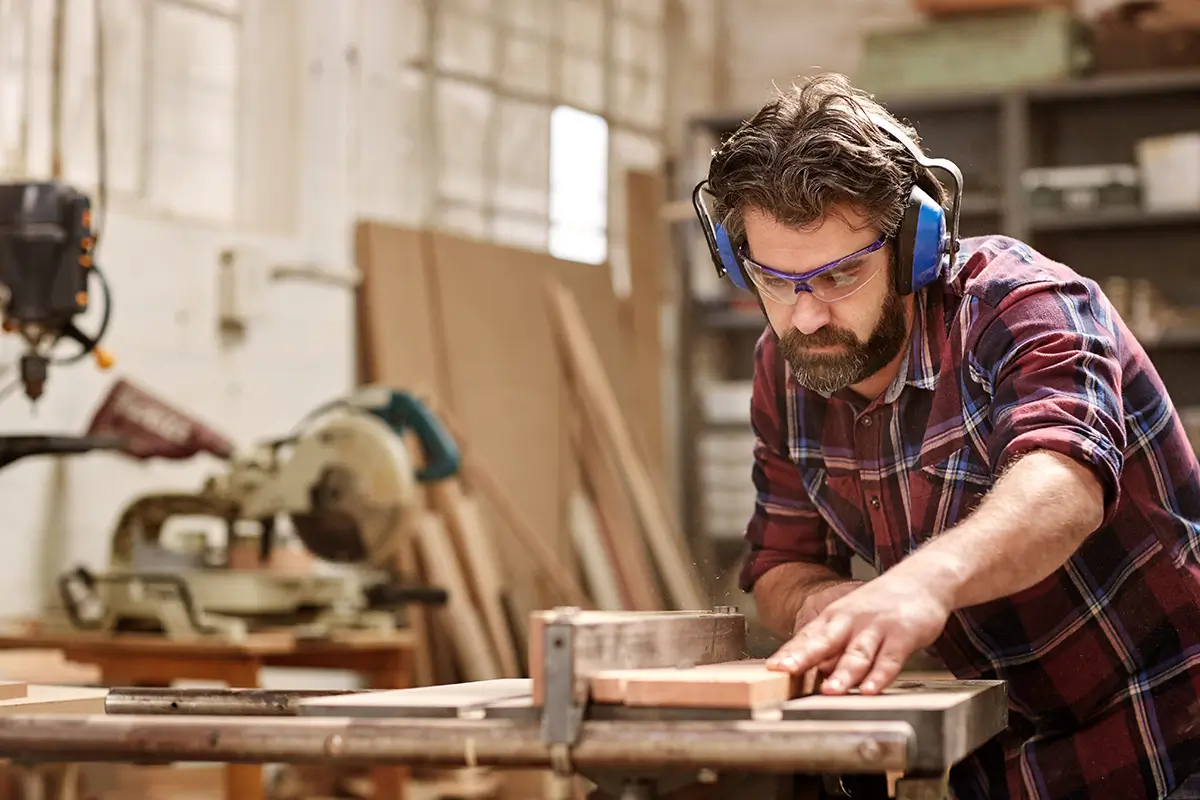Home » Eye Safety at Work
Every day, thousands of workers across industries are exposed to hazards that threaten their eye health. From flying debris and chemical splashes to intense light exposure and prolonged screen use, the risks are real—and often underestimated. According to the National Institute for Occupational Safety and Health (NIOSH), more than 2,000 U.S. workers suffer work related eye injuries that require medical treatment each day. The good news? Experts estimate that 90% of these injuries could be prevented with proper precautions.
Whether you’re in construction, manufacturing, healthcare, laboratory science, or an office setting, understanding and addressing workplace eye safety is essential for your well-being and long-term vision.

Different industries pose different risks, so make sure you follow the safety guidelines of your profession. In general, most hazards fall into the following categories:
These sectors have some of the highest rates of eye injury. Employers must provide ANSI Z87.1-compliant eye protection and train workers on when and how to use it. Depending on the task, protection may include safety glasses, face shields, or full goggles.
Protecting against biological and chemical hazards is crucial. Lab technicians and medical personnel should wear splash goggles, face shields, and practice strict hygiene when handling infectious materials.
Welders should use properly rated helmets with auto-darkening lenses to protect against both flying sparks and dangerous light emissions. Even bystanders need protection, as UV light from welding arcs can travel and cause injury.
Fertilizers, pesticides, dust, and sunlight make eye protection important in outdoor settings. Wraparound glasses with UV protection are a smart investment, especially when operating machinery or trimming foliage.
For desk-based professionals, preventing eye strain is key. The 20-20-20 rule—taking a 20-second break every 20 minutes to look at something 20 feet away—helps reduce fatigue. Proper lighting, ergonomic monitor placement, and screen filters can also help.
The right eyewear depends on the type of hazard and job role:
Always make sure your protective eyewear is certified and fits properly. Poorly fitting glasses can offer a false sense of security while leaving gaps for particles or liquids to enter.
Workplace eye injuries don’t always result in immediate vision loss. Repeated minor damage, uncorrected strain, and delayed treatment can all lead to long-term issues. Employers and employees must recognize that investing in eye safety isn’t just about preventing accidents—it’s about preserving lifelong sight.
Creating a culture of safety, using the right gear, and staying proactive about vision care ensures that workers not only see clearly today but protect their eyes for the future.
For expert support in maintaining your vision on the job and beyond, schedule an eye exam with the experienced team at Tennessee Eye Care. We’re here to help you work safely and see as clearly as possible—no matter your profession.